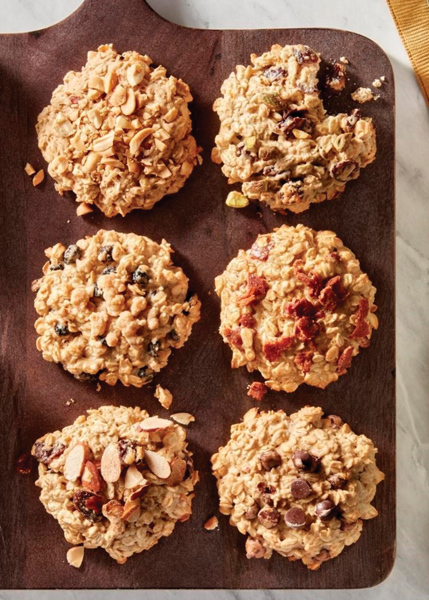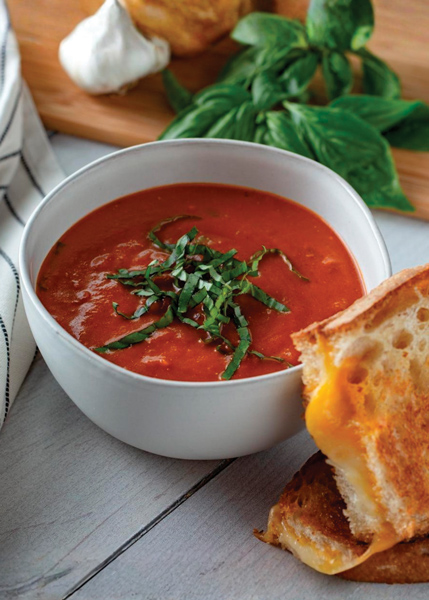Child Health
Study Identifies Cause for Mysterious Cases of Epilepsy in Children
International collaboration uncovers mosaicism, a condition in which cells within the same person have a different genetic makeup, as a cause for pediatric seizures

By studying resectioned brain tissue for mutations, researchers have identified genetic factors that may cause malformations of cortical development, a form of pediatric epilepsy.
« Study Identifies Cause for Mysterious Cases of Epilepsy in Children
Newswise — Epilepsy is present in 4% of the population, and is among the most common brain disorders in children. Modern medicine can prevent most seizure recurrences, but approximately 20% of patients do not respond to treatment.
In these cases, the reason may originate in patches of damaged or abnormal brain tissue known as “malformations of cortical development” (MCD), which results in a diverse group of neurodevelopment disorders. Surgical resection or removal of the patch can cure the seizures, and epilepsy surgery to improve neurological outcomes is now a key part of the modern medical armamentarium, but what causes the patches has largely remained a mystery.
Writing in the January 12, 2023 issue of Nature Genetics, researchers at University of California San Diego School of Medicine and Rady Children’s Institute for Genomic Medicine, collaborating with an international consortium of more than 20 children’s hospitals worldwide, report a significant breakthrough in understanding the genetic causes of MCD.
Members of the Focal Cortical Dysplasia Neurogenetics Consortium investigated 283 brain resections from children across a range of MCD types, with parental consent, looking for potential genetic causes. Because most brain tissue in these children is normal, the scientists focused on mutations present in a small subset of brain cells, a phenomenon termed genetic somatic mosaicism.
“This was a decade-long journey, bringing specialists together from around the world, to recruit patients for this study,” said senior study author Joseph Gleeson, MD, Rady Professor of Neuroscience at UC San Diego School of Medicine and director of neuroscience research at the Rady Children’s Institute for Genomic Medicine. “Until recently, most hospitals did not study resected brain tissue for genetic causes. The consortium organized a biobank to store tissue for high-throughput mosaicism analysis.”
Previous research by Gleeson and colleagues had shown that genetic somatic mosaicism in the mTOR signaling pathway was a contributing factor, said co-first author Changuk Chung, PhD, a postdoctoral fellow in the Gleeson lab.
“But most patients remain undiagnosed, which hinders treatment. We tested for hidden mutations, detectable only by greatly expanding the cohort size and improving methods so that the results could be meaningful. We collaborated to solve technical and logistical bottlenecks. The pieces fell into place, but it took 10 years.”
The team conducted intensive genomic discovery using state-of-art somatic mosaic algorithms developed by the National Institutes of Health-sponsored Brain Somatic Mosaicism Network, of which UC San Diego is a member.
“We tried our best to detect mutations in as little as 1 percent of cells,” said co-first author Xiaoxu Yang, PhD, a postdoctoral scholar in Gleeson’s lab. “Initially we failed. To solve these problems, we needed to develop novel artificial intelligence methods to overcome barriers in sensitivity and specificity.”
The team ultimately identified 69 different genes carrying somatic brain mutations, the majority of which have never previously reported in MCD.
“We can draw parallels with the cancer field because these mutations disrupt cellular function and need to be resected,” said co-first author Chung. “However, unlike cancer cells, brain cells mostly do not divide so these cells misbehave by stimulating epileptic seizures. The question that arose was whether the newly found gene mutations were sufficient to cause MCD disease.”
Gleeson said the scientists found that the genes converged on calcium signaling, gene expression and synaptic functions, and noted that when the mutations were introduced into a mouse model, abnormalities similar to those seen in patients were observed. The study authors suggest the findings could be used to improve diagnosis and develop cures for MCD disease.
“The MCD genes in patient brains have demonstrated critical roles during cortical development,” said Gleeson. “These findings could lead to new molecular classifications for MCD, and ultimately to personalized therapies for epilepsy.”
For a complete list of co-authors, see full study.
Funding for this research came, in part, from the National Institutes of Health (grants NIMH U01MH108898 and R01MH124890, NIA R21AG070462, NINDS R01NS083823), the San Diego Supercomputer Center and UC San Diego Institute of Genomic Medicine.
Source: University of California San Diego
Discover more from Daily News
Subscribe to get the latest posts sent to your email.
Child Health
Make a Difference for Children Globally this Holiday Season
The most meaningful gifts are rarely the ones that can be wrapped and found under a tree. This holiday season, gifts can go beyond just thoughtful presents for family, friends and loved ones and can make real impact for children globally.
Last Updated on November 22, 2025 by Daily News Staff

(Family Features) The most meaningful gifts are rarely the ones that can be wrapped and found under a tree. This holiday season, gifts can go beyond just thoughtful presents for family, friends and loved ones and can make real impact for children globally.
As the world faces multiple crises from the war in Ukraine to the malnutrition crisis in the Horn of Africa and devastating floods in Pakistan, giving back to those in need is as crucial as ever.
Handcrafted by talented artisans from all around the world, UNICEF Market is a unique collection of carefully curated gifts ranging from jewelry to apparel, home decor, kitchenware and more. The gifts give back three times over by supporting artisans and helping local economies thrive, assisting vulnerable children in need and making for thoughtful and compassionate gifts for loved ones. By purchasing gifts from the market, individuals can contribute to creating a more equitable world for every child.
Additionally, UNICEFInspired Gifts provide meaningful opportunities to make a difference by donating important resources in the name of a loved one alongside a personalized card or e-greeting. You can help children facing the malnutrition crisis in the Horn of Africa by purchasing High-Energy Biscuits to help a malnourished child survive and grow healthy. To help provide 50 children with the essentials they need to continue their educations, your donation would provide them with backpacks, exercise books, pens and more. You can also provide a donation to fully vaccinate one child for life, providing him or her with the protection needed to live a healthy and happy life.
To help support its lifesaving mission, UNICEF USA’s partners, including MAC, Hallmark, Pandora and more are making a donation for every product sold this holiday season. For example, every cent of MAC’s Viva Glam Lipsticks is donated to organizations around the world supporting healthy futures and equal rights for all like the United Nations Children’s Fund, which is working to reduce HIV transmission from mothers to babies and help end AIDS in adolescents. In addition, for every “Pandora for UNICEF” charm sold through the new year, Pandora will donate a portion of the proceeds to the organization’s work for children’s education, gender equality, rights awareness and more.
This holiday season, spread some joy and make a difference in the world by visiting market.unicefusa.org where you can support efforts to ensure every child is healthy, educated, protected and respected.
SOURCE:
UNICEF
Discover more from Daily News
Subscribe to get the latest posts sent to your email.
Child Health
5 Health Benefits of Whole Milk for Kids
5 Health Benefits of Whole Milk for Kids: With 13 essential nutrients and vitamins – including calcium, vitamin D and protein – real dairy milk is a simple, nutrient-dense staple. It’s also an easy addition to family favorites like Breakfast Cookies and Homemade Cream of Tomato Soup.
Last Updated on November 22, 2025 by Rod Washington

5 Health Benefits of Whole Milk for Kids
(Family Features) Forget the outdated nutrition advice that told parents to skip whole milk. A growing body of research is turning that idea on its head, making it time to rethink what “healthy” means for growing kids. For decades, families have been told low-fat milk is the best choice once children turn 2. However, those recommendations were largely based on data from adults, not children. Today’s evidence paints a different picture – one where whole milk supports kids’ growth, development and long-term health. “Parents are often surprised to learn whole milk isn’t just safe – it’s beneficial,” said Jaclyn London, MS, RD, CDN, nutrition consultant and spokesperson for Dairy Farmers of America. “When we look at the latest research, whole milk provides the high-quality protein, healthy fats and essential nutrients kids need during key stages of development – without increasing risk for obesity or heart disease.” With 13 essential nutrients and vitamins – including calcium, vitamin D and protein – real dairy milk is a simple, nutrient-dense staple. It’s also an easy addition to family favorites like Breakfast Cookies and Homemade Cream of Tomato Soup. Here are five research-backed reasons to feel confident about choosing whole milk. Whole milk is not associated with higher obesity rates. Multiple large-scale studies from “The American Journal of Clinical Nutrition,” the “International Journal of Obesity” and “Preventive Medicine Reports” show children who drink whole milk have lower or similar body fat levels compared to those drinking reduced-fat milk. Whole milk does not increase risk of heart disease. According to “Advances in Nutrition,” whole milk does not increase cardiometabolic risk in kids; in fact, it’s associated with better vitamin D levels with no adverse effects on cholesterol or glucose. It’s nutrient-dense and supports optimal growth. All types of milk, including whole, provide essential nutrients like calcium, protein and vitamins A and D – all critical for bone development and healthy growth in children, per “Nutrition Research Reviews.” Kids like the taste – and that matters. Children often prefer the taste of whole milk over low-fat versions, according to the “Journal of Dairy Science,” which can lead to more consistent consumption. Adults may benefit, too. Among adults, full-fat dairy is associated with greater satiety, improved blood sugar regulation and a reduced risk of metabolic syndrome, according to a study published in “Nutrition & Metabolism,” helping reframe full-fat dairy as part of a balanced diet. Learn more at DFAMilk.com.
Breakfast Cookies
Prep time: 20 minutes Cook time: 15 minutes Servings: 12 Cookie Base:- 2 1/2 cups old-fashioned oats
- 3/4 cup all-purpose flour
- 1/3 cup firmly packed brown sugar
- 1 teaspoon baking powder
- 1/8 teaspoon salt
- 1/4 cup butter, melted
- 1/2 cup whole milk
- 1 egg
- 1 teaspoon vanilla extract
- Heat oven to 350 F. Line cookie sheets with parchment paper; set aside.
- In large bowl, stir oats, flour, brown sugar, baking powder and salt. In medium bowl, stir butter, milk, egg and vanilla until well mixed; add to oat mixture. Stir until combined and evenly moistened.
- Drop 1/4 cup dough onto prepared cookie sheets. Slightly flatten dough with hand.
- Bake 15-17 minutes, or until lightly browned, firm to touch and baked through. Move to wire rack to cool.
- Variations: Add maple syrup and crumbled bacon; sliced almonds, dried cherries and almond extract; semisweet chocolate chips and banana pieces; or peanuts and peanut butter.

Homemade Cream of Tomato Soup
Prep time: 10 minutes Cook time: 20 minutes Servings: 4- 2 tablespoons olive oil
- 1/2 medium white onion, chopped
- 1 1/2 teaspoons finely chopped garlic
- 1 can (28 ounces) crushed tomatoes
- 1 tablespoon parsley flakes
- 1/4 teaspoon baking soda
- 1 tablespoon roughly chopped fresh basil leaves
- 1 tablespoon honey
- 2-3 cups milk
- salt, to taste
- pepper, to taste
- basil leaves, for garnish (optional)
- In 2-quart saucepan over medium-high heat, heat olive oil; add onion and garlic. Cook, stirring occasionally, until tender, 2-3 minutes. Add tomatoes, parsley and baking soda. Cook until mixture comes to boil. Reduce heat to medium-low; cook 10 minutes. Stir in basil and honey.
- Stir in milk to reach desired consistency. Cook over medium-high heat until heated through, 2-3 minutes. Add salt and pepper, to taste.
- Garnish with basil leaves, if desired.
At our core, we at STM Daily News, strive to keep you informed and inspired with the freshest content on all things food and beverage. From mouthwatering recipes to intriguing articles, we’re here to satisfy your appetite for culinary knowledge.
Visit our Food & Drink section to get the latest on Foodie News and recipes, offering a delightful blend of culinary inspiration and gastronomic trends to elevate your dining experience. https://stmdailynews.com/food-and-drink/
Discover more from Daily News
Subscribe to get the latest posts sent to your email.
Child Health
Pediatrician-Approved Tips to Conquer Holiday Travel with Little Ones
The holiday season is a time for joy and togetherness, but it can often bring stress for parents of young children with the amount of “newness” in each experience, particularly when it comes to seasonal travel.
Last Updated on November 16, 2025 by Rod Washington
(Family Features) The holiday season is a time for joy and togetherness, but it can often bring stress for parents of young children with the amount of “newness” in each experience, particularly when it comes to seasonal travel.
To help make holiday travel with little ones more manageable – whether traveling by bus, train, car or plane – Dr. Whitney Casares, MD, MPH, pediatric medical consultant for Gerber, offers this guidance for families.
Travel Light Especially if traveling by plane, pack as light as possible (or check most of your luggage) so you have less to maneuver through security gates and on the plane. However, for longer trips, packing small, developmentally appropriate toys and snacks can provide perfect entertainment for little ones.
Especially if traveling by plane, pack as light as possible (or check most of your luggage) so you have less to maneuver through security gates and on the plane. However, for longer trips, packing small, developmentally appropriate toys and snacks can provide perfect entertainment for little ones.
Prepare for Ear Pressure
Babies often scream during takeoff and landing on flights because they can’t easily equalize the pressure in their eustachian tubes, the connection between their ears and the back of the throat. When you’re ascending and descending, give your baby something safe to suck on, like a pacifier, to reduce the buildup of pressure in the ears. Taking small sips of water, breastmilk or formula and yawning are also ways to help babies and toddlers experiencing ear pressure during flights.
Plan for Time Adjustments
For long trips that include time zone changes, expect children to take several days to grow accustomed to their new schedules. Plan an extra day or two for that time adjustment, if possible, when mapping out your trip and make time for stops to stretch, snack and take bathroom breaks.
Pack Convenient Snacks
Having easy-to-access snacks that don’t make a large mess can make travel easier and less stressful. For example, Gerber Plant-Tastic Banana Berry & Veggie Smash with Oats Organic Pouch and Plant-Tastic Lil’ Crunchies White Bean Hummus are nutritious snacks for toddlers that come in resealable containers that are easy to pack for on-the-go families.
Bring Sanitizing Products
Having your own sanitizing wipes on-hand makes it easier to freshen up often-touched surfaces in public spaces like seatback trays, chairs and tables. While safe on most hard surfaces, check the label before using the wipes then allow the area to dry completely before letting your child touch it. Warm, soapy water can also be used to clean toys and other personal products.
Maintain a Consistent Schedule
Keeping your child on his or her normal schedule during the holidays isn’t always feasible and a few imperfections are to be expected during the busy season. However, if your baby’s feeding or sleep schedule does get thrown off by holiday events, try to return to a consistent routine as soon as possible. Be patient with yourself and your little one as you both adjust.
Be Mindful of Anxiety
While attending holiday gatherings, your child may become overwhelmed when meeting new people, including family members. Babies start to develop separation anxiety and apprehension to strangers at about 6 months old as their brains start to understand the concept of object permanence (that something still exists when it is not present). Educating loved ones about this developmental stage can help you feel less anxious about big family gatherings with your little one. If your child is particularly sensitive, try introducing new people in smaller cohorts, as opposed to introducing him or her to the whole group at once.
Take Time for Yourself
While traveling with little ones can be a “bumpy road,” it’s important for parents to also try and enjoy the holidays as much as possible. Making some time for yourself – taking deep breaths, listening to a meditation on an option like the Calm app or playing a favorite song, for example – can help you recharge and relax ahead of a big event.
To find more expert tips and resources to help conquer the holiday season, visit Gerber.com.
Photos courtesy of Getty Images
SOURCE:
Gerber
Discover more from Daily News
Subscribe to get the latest posts sent to your email.

